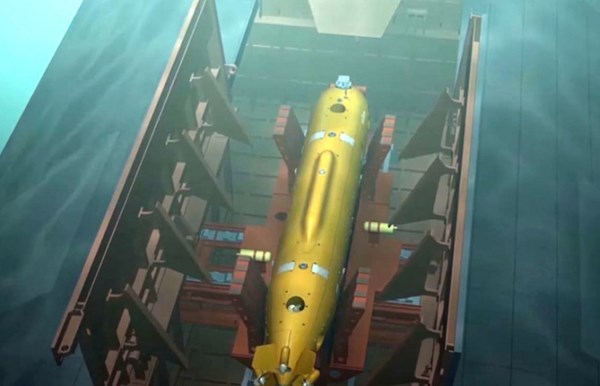Expert: Russia’s Poseidon nuclear underwater drone dangerous to Russia itself
The Russian “Poseidon” nuclear underwater drone will soon be tested practically, which is unsafe, observes Russian military expert Maxim Klimov in an article for the Russian newspaper “Military Review”.
As an example, the expert mentions the long-range traceless self-guiding 53-61 torpedo, which the Russian Navy only realized was unsuitable for combat ten years after it was commissioned. Klimov says that the reason for this was the “deliberately inadequate statistics and the inadequate testing depth”.
“However, let us look at the US Navy’s statistics for combat training with shots: the number of torpedo shots exceeds the number of missile shots by nearly an order of magnitude!” Klimov observes.
The expert doubts that the Poseidon will be capable of moving quietly.
“With the capacity (4-4.5 megawatts) needed to move with the cited speed (55 knots) and the huge power density (more than 156 horsepower per cubic meter) the Status (Poseidon) will simply have no space (or chassis diameter) to effectively use means of acoustic protection,” the military specialist writes.
Klimov notes that the nuclear underwater drone could strike “even after the enemy has asked for peace, or at another politically unsuitable moment” when it will be “impossible to stop the already launched torpedo”.
The expert believes that the US has already been working on its anti-torpedo Tripwire system, whose characteristics indicate that it would be capable of destroying targets like the Poseidon. He estimates that after the weapon is launched, the US will have more than 24 hours to intercept the nuclear underwater drone, leaving little chance that the Poseidon will avoid destruction.
In Klimov’s opinion, creating the nuclear underwater drone is “senseless and inexpedient from a military perspective, and could have severe political consequences”. Instead, he proposes that the Russian Defense Ministry should focus on developing submersibles, including nuclear powered ones, with a high level of stealth, equipping diesel submarines with compact nuclear power units, developing deep-water submersibles and dealing with the Armed Forces’ “other critical problems”.
Earlier in March, the expert wrote that the Poseidon’s movement at a depth of 1 km would create “the ideal conditions for it to be detected, due to its being near the axis of the deep sound channel”, and questioned the drone’s lack of subsonic spectrum.
In December 2018, Klimov said that Russia is lagging critically far behind the West in its military implementation of modern hydroacoustic concepts and devices.
Russia’s nuclear underwater drone was officially launched in March 2018 under the name “Poseidon”. The weapon of mass destruction had been known since 2015 as the “Status-B”.
